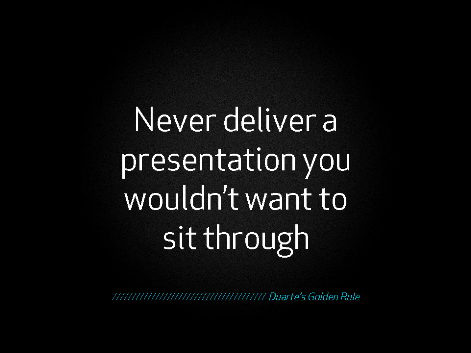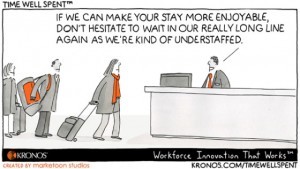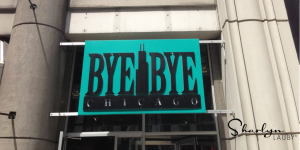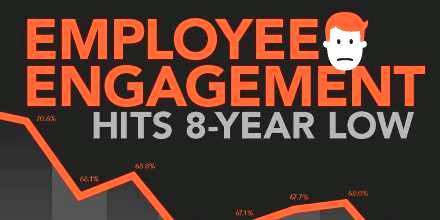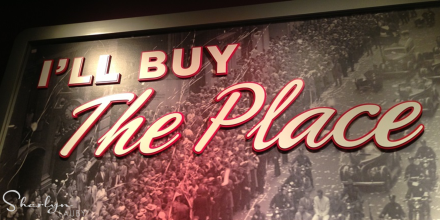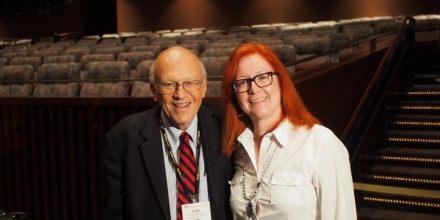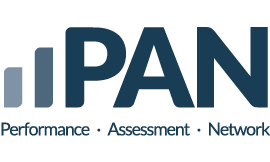Sharlyn J. Lauby's Blog, page 175
June 23, 2015
Pre-Boarding: Bring High Tech and High Touch to Onboarding
(Editor’s Note: Today’s post is sponsored by Xerox . For more than a half a century, Xerox has been a leader in document technology and services. Xerox Content Management Services helps organizations organize, classify and manage their most critical data. Enjoy the post!)
In his 1982 book “Megatrends”, John Naisbitt coined the phrase ‘high tech, high touch.” The idea being that the more technology we are exposed to, the more of a personal touch we want in our interactions. There’s never been a better case study for this than onboarding.
The Society for Human Resource Management (SHRM) defines onboarding as “the process by which new hires get adjusted to the social and performance aspects of their jobs quickly and smoothly, and learn the attitudes, knowledge, skills, and behaviors required to function effectively within an organization.” Organizational culture defines when the onboarding process starts and ends.
Regardless of when our company’s onboarding begins and concludes, one thing is consistent – there are three primary stakeholders in the process:
The new hire employee is excited about their new role with the company. They want to make a great first impression. They want to do awesome work. And they also want to know about things like when they’re going to get paid and how to sign up for benefits.
The hiring manager has invested a lot of time finding the new employee. Maybe they’ve been running the department short staffed and can’t wait for the new hire to start. Maybe this is a new position and the employee will be helping the department achieve their stretch goals. The hiring manager wants to get their new employee trained and working ASAP.
Human resources is responsible for making sure that the new employee is welcomed into the organization and effectively brought onto the payroll. They need to make sure all the “i’s are dotted and t’s are crossed”
However, if #3 (the human resources part) doesn’t happen, then the employee and manager aren’t positioned for success. The employee is distracted because they don’t have answers to their questions about pay, benefits, etc. The manager isn’t able to spend time building a relationship with the employee because they are trying to get the administrative part of the process finalized. So how do we make sure that the onboarding process achieves the benefits of being both high tech and high touch?
I’ve been hearing the term “pre-boarding” a lot lately. Pre-boarding is defined as laying the groundwork for an employee’s first day on the job. Pre-boarding is the step in the onboarding process that creates success for the employee and the manager. Once the groundwork is finished, the manager and employee can dedicate their focus to the job and building a good working relationship.
Pre-boarding automation is the key to effective onboarding
Click To Tweet
Which is why I wanted to share with you a few highlights from my test drive of Xerox’s new Workflow Automation Solution for HR Onboarding. While the solution provides support for the entire onboarding process, it really shines when it comes to setting human resources, employees and managers up for success during the crucial pre-boarding process.
Powerhouse – – The Xerox Workflow Automation Solution for HR Onboarding is able to handle batch processing of documents. In my past corporate roles, we would often hire several interns or seasonal employees at the same time. This solution gives me the ability to send multiple offers at the same time. The faster I can bring employees into the organization, the happier everyone will be.
Configurable – – Create custom forms using the solution’s Form Builder. Every organization has at least one unique form. It might be for an employee benefit or maybe emergency contacts. This solution gives you the ability to create your own forms and distribute them accordingly.
Agility – – It’s compatible with your existing software. One of the things I liked about the Xerox solution was its ability to work with Microsoft Outlook. Let’s face it, we still get resumes and inquiries via email. With the HR onboarding solution, I’m able to immediately move those documents. No separate sign in, just a click of a mouse.
If you want to learn more, check out the Xerox Workflow Automation Solution for HR Onboarding website and download this case study with Convergys Corporation. We know the challenges with onboarding administration. It does a great job of sharing the results we can expect: a highly configurable onboarding process.
That’s what stakeholders are looking for. They want the efficiency and scalability that technology offers with the responsiveness and individuality that create an engaged and productive workforce. It’s up to human resources to make that happen.
The post Pre-Boarding: Bring High Tech and High Touch to Onboarding appeared first on hr bartender.






June 21, 2015
The Golden Rule of Giving a Great Presentation
For many of us when we’re asked to do a presentation, we have to wear three hats:
Developer – We have to put together the outline, references, resources, etc. We’re the developer of content. The good news is we’re also the subject matter expert. We know our stuff. So this step is about curating the right information.
Designer – This one is a bit tougher. Often when we tell people to draw or be creative, the first response is “I’m not an artist!” But when developing a presentation, it’s part of our job to incorporate visuals into the content that will help us tell an engaging story.
Deliverer – Lastly, we’re responsible for communicating the content. Whether it’s on a webinar or a conference stage, we have to bring the content to life. We need to practice our platform skills and come prepared to share the content we’ve created.
Even the best developers, designers and deliverers need help telling their story. It’s hard to wear all three hats successfully. Sometimes we get two of them perfect, and the third one…well, not so much. I know for me, my love of minimalist design can have an impact on the way my presentations are received. (Translation: maybe I need to put more images in my presentations.) The question is “How do I make that happen?!”
That’s why I was very excited to be invited to the Association for Talent Development’s (ATD) Visual Storytelling Certificate Program. The program was delivered in partnership with Duarte Inc. They were the firm responsible for creating the graphics for Al Gore’s keynote that formed the basis for his Academy-Award winning film, “An Inconvenient Truth.” I figured if Al Gore needs help with his PowerPoint, then I shouldn’t be afraid to spice up my presentations. Our facilitator, Michael Duarte, said during the session, “Take a risk and lose a fear.”
What I learned was amazing. If we want to tell a good visual story, we have to start with good content. I wish you could see the StoryMap template they gave us. It provides a clear, logical way to organize content. More importantly, it gives us the shape (or flow) for a great presentation. I learned that every great presentation has a formula. The logical part of me loved this. From Martin Luther King Jr.’s “I have a Dream” speech, to Steve Jobs’ iPhone launch keynote and even the Gettysburg Address – they all follow a formula.
Nancy Duarte explains the formula in her TED talk on “The Secret Structure of Great Talks”
After learning the structure of a great presentation, we focused on creating visuals to support the story. I will share with you one very cool activity we did called “wordmapping.” I’ve mentioned before that visuals are a very important part of learning. But practically speaking, with all the copyright laws out there, it can be a challenge to find images that can really support our content.
Wordmapping is similar to mind mapping but with images. With wordmapping, you can visualize concepts in a new way. For example, let’s say you’re planning a presentation on workplace security. What’s the first image that pops into mind? Some people might say a padlock.
But instead of using the image of a padlock, do this instead:
What does a padlock make you think of? (1)____________________
What does (1)___________ make you think of? (2)______________
What does (2)___________ make you think of? (3)______________
Now you have 4 image options: a padlock – if you must, plus (1), (2), and (3). From a design perspective, we get to be more creative. We have more flexibility. And we allow our audience to use their creativity as well. That’s why the golden rule to presentations is this:
“Never give a presentation you wouldn’t want to sit through.”
That was the big takeaway for me. I want to sit through presentations that makes me think. I like facilitators who don’t spoon feed me information. A simple activity like wordmapping made me realize that I don’t have to sacrifice images to give my audience their space to think. I don’t have to use literal images to tell a story.
If you’re like me and you’re looking to step up your game when it comes to designing great presentations, check out Duarte’s Visual Storytelling program being offered by ATD. They provide tons of resources that you will immediately use back in the office.
Lots of people say it’s time to kill PowerPoint (or Prezi or Keynote, whichever one you use). I say it’s time to use it more effectively. Visual learners like it. And if we’re supposed to be learner centric, then it makes good business sense to deliver what our audience wants.
Image courtesy of Sharlyn Lauby
The post The Golden Rule of Giving a Great Presentation appeared first on hr bartender.






June 19, 2015
Being Understaffed Isn’t An Excuse – Friday Distraction
(Editor’s Note: Today’s post is brought to you by our friends at Kronos , the global leader in delivering workforce management solutions in the cloud. Be sure to check out The Workforce Institute at Kronos Incorporated’s latest radio talk on Talent Management 2020: Millennials in Charge of a Multi-Generational Workforce . Enjoy the post!)
We’ve talked before about staffing challenges and the operational impact of being understaffed. Today’s Time Well Spent from our friends at Kronos made me think about the issue in a different light.
Customers are not going to accept a business being understaffed as an excuse. Companies don’t give discounts for providing less than the expected customer experience (because they’re understaffed). I totally believe that customers will start to look at the profits companies are making – along with their excuses about being understaffed and not delivering services – and make some decisions on where to spend their money.
Being understaffed isn’t an excuse for bad customer service
Click To Tweet
Organizations have to start thinking about how to maintain staffing levels. And honestly, it doesn’t need to be with full-time employees. Now is a perfect time to develop a contingent labor strategy. Part-time, seasonal, on-call, freelancers, etc. – whatever term you want to use – can help the company when they need extra employees.
Being understaffed is not an excuse. Companies know it. And more importantly, customers do too.
Related posts from HR Bartender:
![Recruiting Is Your Competitive Advantage [infographic] – Friday Distraction](https://i.gr-assets.com/images/S/compressed.photo.goodreads.com/hostedimages/1446070747i/16742832.png) Recruiting Is Your Competitive Advantage [infographic] – Friday Distraction
Recruiting Is Your Competitive Advantage [infographic] – Friday Distraction
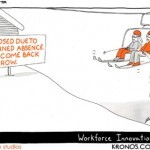 Planning For the Unexpected – Friday Distraction
Planning For the Unexpected – Friday Distraction
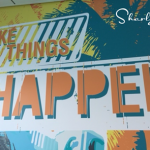 Embracing Organizational “Outsiders”
Embracing Organizational “Outsiders”The post Being Understaffed Isn’t An Excuse – Friday Distraction appeared first on hr bartender.






June 18, 2015
Travel Reward Points Are An Employee Perk [poll results]
We recently ask HR Bartender readers who keeps the reward points accumulated during business travel. Honestly, this one didn’t even come close. Maybe that’s why we received a lower response rate than usual. When it comes to business travel, employees get to keep the points.
It made me wonder if part of the reason is because employees have to pay for travel then get reimbursed. Employees get the benefit of keeping the points because the company gets the benefit of not issuing company credit cards. That might be slightly cynical, but if it works, that’s great. Especially for employees that travel a lot.
True story: I once held a volunteer leader role that didn’t issue credit cards (because it was a non-profit). But there were times when the organization would owe me $5,000 or more in reimbursable expenses. At some point, they started realizing that people were not going to volunteer if they had to spend and wait for reimbursement for large sums of money. That’s when the credit card policy changed.
That same philosophy holds true for employees. If employees are doing lots of travel, the points serve as recognition for being away from family and home. Being a road warrior is a tough job. What’s a few thank-you points really cost the organization? Maybe a lot.
Image courtesy of Sharlyn Lauby
Related posts from HR Bartender:
 Make Your Next Employee Event “Instagrammable”
Make Your Next Employee Event “Instagrammable”
 Being Part Of the Succession Plan Isn’t An Entitlement
Being Part Of the Succession Plan Isn’t An Entitlement
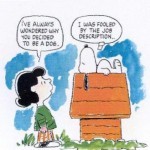 Employees Need to Own Their Success
Employees Need to Own Their SuccessThe post Travel Reward Points Are An Employee Perk [poll results] appeared first on hr bartender.






June 16, 2015
Prevent Exit Interviews With Stay Interviews
We haven’t thought about them for a while, but stay interviews might be making a comeback. They’re defined as structured interviews designed to learn the reasons that employees stay with a company or the conditions that might cause them to leave. As the talent wars continue, stay interviews can be a valuable way to engage and retain employees.
During the Association for Talent Development’s (ATD) International Conference and Expo, I had the chance to hear Dr. Beverly Kaye, co-author of the international best-seller “Love ‘em or Lose ‘em: Getting Good People to Stay” discuss her new book “Hello Stay Interviews, Goodbye Talent Loss” which talks about the dynamics of stay interviews. What I thought was interesting about the renewed stay interview conversation was the idea of having recruiters conducting stay interviews.
Yep, that’s right. Recruiters doing stay interviews.
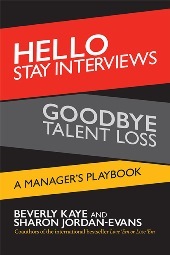 I asked Dr. Kaye about the role recruiters can play in stay interviews. “In my research, I’m finding that retention is the new measurement of recruiting success and different players have a role in the outcome. Clearly the employee’s manager is the best bet to conduct a stay interview. But, the missing link is the recruiter who is often the first to really connect with the new hire. I believe that new recruits do bond with the person who gives them the interview and invites them to join the organization.”
I asked Dr. Kaye about the role recruiters can play in stay interviews. “In my research, I’m finding that retention is the new measurement of recruiting success and different players have a role in the outcome. Clearly the employee’s manager is the best bet to conduct a stay interview. But, the missing link is the recruiter who is often the first to really connect with the new hire. I believe that new recruits do bond with the person who gives them the interview and invites them to join the organization.”
In her book, Dr. Kaye focuses on providing managers with practical ideas they can use to conduct stay interviews with their employees. But I must confess that I’m still focused on the idea of recruiters getting involved with stay interviews. So I asked Dr. Kaye if she could share some sample questions:
What was something your last organization did well that we don’t do?
Is the job turning out to be what you thought it would be? How so? How not?
What did your past job offer that you feel is missing in this one?
I totally get this. I’ve worked for companies where we asked employees these questions during their first 30 / 60 / 90 days of employment. They have a fresh set of eyes. It’s smart for the company to get their feedback. And there’s research to show that 40% of employees who leave their job do so within the first six months of employment. Making a connection with the company quickly is important and the recruiter could be a key individual in the employee’s success.
But I also want to bring a degree of realism to this conversation. I’m sure one of the biggest objections to doing stay interviews is having an employee suggest something that you know the company won’t consider. Which leads me to my one note of caution when it comes to stay interviews. Please don’t do them if you’re not prepared to listen. The absolute worst thing you can do is ask someone for their feedback and not do anything with the information. Dr. Kaye recommends a 4-step approach for handling employee responses that cannot be accommodated:
ACKNOWLEDGE – Listen to the employee and acknowledge what they are saying.
TRUTH – Tell the employee that their request isn’t a viable option.
CARE – Express a sincere concern to work with the employee.
ASK – Find out if there is another option that might be satisfactory.
Another objection to stay interviews might involve time. Some recruiters and/or managers might say they don’t have time to do stay interviews – “I’m overworked, underpaid and stressed out.” To that I have a couple of responses:
1) Don’t forget recruiters and managers are people too. If the company is serious about retaining talent, they should conduct stay interviews at every level of the organization. That includes the recruiting, human resources and management team.
2) If you don’t have time to conduct stay interviews, then chances are you don’t have time to deal with an employee resigning, hiring their replacement and training them. Stay interviews will definitely take less time.
Objections behind us, it’s important to find time to conduct a meaningful stay interview. (Translation: the stay interview while multitasking isn’t a good idea.) While it’s ideal to conduct stay interviews in person, Kaye shared with me some strategies for conducting stay interviews with virtual teams. “I have seen managers with virtual teams use Skype to do their stay interviews. Being able to see the individual gives the manager the opportunity to pick up clues from gestures and facial expression. If this can be done for virtual employees it can be as effective as face to face meetings.”
You can prevent exit interviews with stay interviews
Click To Tweet
Stay interviews have tremendous potential for the organization. Yes, it’s possible the company will still lose the employee (even after conducting a stay interview). There are some offers that are just too good to pass up. But the company will have learned something. And to quote the great B.B. King, “The beautiful thing about learning is nobody can take it away from you.”
Image courtesy of Sharlyn Lauby
Related posts from HR Bartender:
![Employee Engagement Is At an 8-Year Low [infographic] – Friday Distraction](https://i.gr-assets.com/images/S/compressed.photo.goodreads.com/hostedimages/1434579502i/15240357.jpg) Employee Engagement Is At an 8-Year Low [infographic] – Friday Distraction
Employee Engagement Is At an 8-Year Low [infographic] – Friday Distraction
 Your Blueprint for Employee Performance Meetings
Your Blueprint for Employee Performance Meetings
 How You Can Become a Simply Irresistible Organization
How You Can Become a Simply Irresistible OrganizationThe post Prevent Exit Interviews With Stay Interviews appeared first on hr bartender.






June 14, 2015
Recording Workplace Conversations – Ask #HR Bartender
We’ve seen several instances in the media where a customer or bystander has recorded an employee interaction…and it’s gone viral. The Starbucks employee meltdown over a straw is the latest case in point.
But what about employees recording each other? I recently received a very interesting reader question:
I just discovered that an employee secretly recorded a conversation with someone else in our company. I wanted to know if he had the right to record the conversation.
There are so many nuances to this situation, it’s pretty darn impossible to give a definitive answer. But there are some things you should know about recording fellow employees. So, I asked Jonathan Segal, a partner with the firm Duane Morris LLP to share some insights. Jonathan has helped us many times before – this is one of my faves . As always, please remember that his comments should not be construed as legal advice or as pertaining to any specific factual situations. If you have detailed questions, they should be addressed directly with your friendly neighborhood labor attorney.
Is the recording of workplace conversations covered by federal or state law?
[Jonathan] Under federal law, you need the consent of only one party. The same is true under most state laws. But in 11 states, such as Maryland and Pennsylvania, you need the consent of all parties or you have committed a criminal offense. Here’s a resource to find out the details of your state.
When it comes to recording conversations, does the content of the conversation matter? For instance, are there certain topics that are automatically allowed to be recorded (or absolutely cannot be recorded)?
 [Jonathan] There are no per se on or off switches. For example, a court may allow an unlawful recording to be admitted into court if the recording is designed to capture perceived illegal conduct, such as discrimination. Conversely, if an individuals is recorded in a state without their consent and their consent is not required, the disclosure to others of something confidential, such as a miscarriage or other medical information, may violate the common law privacy rights of the person (even though it is not wiretap under federal or state law).
[Jonathan] There are no per se on or off switches. For example, a court may allow an unlawful recording to be admitted into court if the recording is designed to capture perceived illegal conduct, such as discrimination. Conversely, if an individuals is recorded in a state without their consent and their consent is not required, the disclosure to others of something confidential, such as a miscarriage or other medical information, may violate the common law privacy rights of the person (even though it is not wiretap under federal or state law).
If someone asks if they can record a conversation, are there some guidelines a person should follow?
[Jonathan] I love this question. Yes, get the consent on the tape after you ask off tape. I know this is a shock to all but, sometimes after talking with a lawyer, the story of an employee changes so make sure you obtain consent before you tape and then get the consent on the record.
Can organizations put something in their employee handbooks about recordings? Should they?
[Jonathan] If an organization wants to prohibit, they should make it explicit in their handbook. However, there are many nuances that need to be considered. For example, it is safer to prohibit taping of conversations of patients and customers, for example, than of employees.
Under the National Labor Relations Act (NLRA), taping of coworkers could be protected under recent guidance from the National Labor Relations Board’s (NLRB) General Counsel. Even here, it is safer to prohibit during working time versus non-working time. There is a potential tension between the NLRB’s interpretation of NLRA and state criminal laws that require the consent of all parties when it comes to taping outside of working time, such as during breaks. I could write a blog post on this issue and, maybe I will, but suffice it to say you really need legal advice on the NLRA and other laws before you draft a ‘thou shall not record policy’ in terms of timing of publication (cannot be in response to union activity) and content (balancing competing legal and business risks).
Is it legal to record workplace conversations?
Click To Tweet
Last question: I know we don’t have all the details, but, if someone discovers that a “secret recording” has been made, do they have an obligation to report it? And what if someone finds out that they’ve been recorded without prior consent, do they have recourse?
[Jonathan] Pardon the formality, but I do take ethical rules very seriously. And I know you’ve already mentioned this earlier in the post, but neither this nor any other answer should be construed as legal advice or as pertaining to specific factual circumstances. Now, having said that, and I will focus on me if I were taped without my consent. I would ask 3 questions:
Does it violate the law? The question is whether a prosecutor will prosecute. Not likely although a greater possibility if there is the disclosure of personal information.
Does it violate company policy? I would go to human resources.
Does it involve private information? I would consider a common law invasion of privacy claim without regard to whether the consent of all parties is required under the state criminal wiretap law. Even if the consent of only one party is required under the state criminal law, something can create civil liability if it is considered an invasion of privacy under the common law.
As always, my thanks to Jonathan for sharing his knowledge with us on this very tricky issue. For those of you who are attending the SHRM Annual Conference in Las Vegas, mark your schedule to see Jonathan’s speak on Tuesday, June 30. Here are the times and topics:
11:10a “Mad Men Era: Is it really over?”
11:50a “You’re No Shrinking Violent” and Other Micro-Aggressions
4:00p Systemic Approach for Stamping Out Harassment
Recording workplace conversations is a very delicate topic and one that I learned is in a state of flux. Human resources professionals can stay on top of the subject by following Jonathan’s insights on the Duane Morris Institute blog or following him on Twitter. You can also visit the Society for Human Resource Mangement (SHRM) Policy Action Center to receive updates on this and other critical workplace issues.
Image courtesy of Sharlyn Lauby
Related posts from HR Bartender:
 Employee Respect Is an Unfair Labor Practice – Ask HR Bartender
Employee Respect Is an Unfair Labor Practice – Ask HR Bartender
 Why Job References Are Important – Part 1 – Ask #HR Bartender
Why Job References Are Important – Part 1 – Ask #HR Bartender
 Corporate Culture: Small Changes Create Big Results – #RethinkTheDailyGrind
Corporate Culture: Small Changes Create Big Results – #RethinkTheDailyGrindThe post Recording Workplace Conversations – Ask #HR Bartender appeared first on hr bartender.






June 12, 2015
Employee Engagement Is At an 8-Year Low [infographic] – Friday Distraction
I’m not sure if the title of today’s post is a major surprise. We’ve been talking about employee engagement for quite some time. In fact, I’m concerned that the conversation has turned to noise. But regardless of what you call the term, engagement remains a key business issue.
That’s only a one part of the 2015 Employee Engagement Trends Report compiled by Quantum Workplace. The report analyzed close to 500,000 surveys to uncover workplace trends at a national, regional, organizational and industry level. I really liked that they prepared this infographic to share some high-level themes from their research.
I walked away from their report with three takeaways:
1) Leadership matters. It’s time to invest in their development.
2) Employee recognition is critical for growth and retention.
3) Companies have got to start paying people competitive wages.
If you’re interested in a deeper dive on these trends, you can find the full trends report here. To attract and retain the best talent, organizations have to be ready to complete. To effectively compete, you have to know what the competition is doing.
Employee engagement hits an 8-year low [infographic]
Click To Tweet
Infographic courtesy of Quantum Workplace
Related posts from HR Bartender: [image error] Employees Want Better Pay – Period
![Attracting Boomerang Employees [infographic] – Friday Distraction](https://i.gr-assets.com/images/S/compressed.photo.goodreads.com/hostedimages/1446072010i/16742886.jpg) Attracting Boomerang Employees [infographic] – Friday Distraction
Attracting Boomerang Employees [infographic] – Friday Distraction
 Employee Happiness Should Not Be An Impossible Task
Employee Happiness Should Not Be An Impossible TaskThe post Employee Engagement Is At an 8-Year Low [infographic] – Friday Distraction appeared first on hr bartender.






June 11, 2015
If You Know the Goal, Do You Still Have to Plan for It?
I read a statement recently that I haven’t been able to forget.
People without a clear purpose will have to carry an organizer to plan their day.
I keep staring at this sentence trying to figure out the intersection of purpose and planning. If I break down the key definitions, purpose means the reason something is done. So the sentence could be reworded as “People who don’t understand the reason something is done will have to carry an organizer to plan their day.”
Add to that, planning is typically a list of steps, resources, and timing to achieve an outcome. The statement then can be reworked to say, “People who don’t understand the reason something is done will have to carry an organizer with a list of steps, resources, and timing to achieve their work for the day.”
As I rework the sentence, I struggle with the logic. A person can completely understand their purpose and use planning as a way to achieve it. Or they could, as the author mentioned, be without purpose and use the planner to find it.
Same is true for goals and tasks. A goal is the focus of a person’s effort. It’s a desired result (similar in concept to a purpose). A task is a piece of work to be done, or a step in the process. Carrying an organizer with the steps to be done doesn’t necessarily mean you’ve forgotten the goal or that you don’t understand the goal.
Maybe the point isn’t planning. Maybe it’s the method being used to plan (i.e. an organizer). Maybe the author’s intent was to say, “People who haven’t found the reason something is done carry an organizer with a list of steps, resources, and timing to achieve their work for the day.” But I’m not sure that makes any sense either.
I guess the reason that the sentence above has stuck with me was it seems to imply that if you’ve found your passion or you know your goal then you don’t need to write anything down (or note it on your phone, whatever your preferred planning method might be). I took the sentence as saying planning is only necessary if you don’t know your path. And I don’t believe that to be true. Maybe I’m just being defensive because I carry an organizer and I like to think I’m pretty aware of my purpose and goals.
What is the intersection of purpose and planning?
Click To Tweet
It’s true – planning can help set goals and create focus. It can also assist with setting priorities and establishing goal congruency. For example, we know the goals…we just need to put them in a logical order. A personal example would be Mr. Bartender and I know the renovation projects we want to do around the house. We have to prioritize them and establish a budget. And plans can change over time.
What do you think? Do you carry an organizer and what do you use it for?
Image: quote courtesy of Howard Hughes photographed by Sharlyn Lauby
Related posts from HR Bartender:
 Support the People Who Support You
Support the People Who Support You
 What Do You Want To Be Known For
What Do You Want To Be Known For
 Corporate Culture: Small Changes Create Big Results – #RethinkTheDailyGrind
Corporate Culture: Small Changes Create Big Results – #RethinkTheDailyGrindThe post If You Know the Goal, Do You Still Have to Plan for It? appeared first on hr bartender.






June 9, 2015
INTERVIEW: Dr. Ken Blanchard on Leadership and Management
One of the classic questions we ask business people is something about the books they read. It might be “Tell me the one book every manager needs to have on their bookshelf.” Or “What’s the business book you’d take with you to a secluded island?” You get the point. Well, The One Minute Manager is definitely one of those books.
Authored by Dr. Ken Blanchard, The One Minute Manager has sold over 15 million copies and been translated into 42 languages. So when I heard that Dr. Blanchard was releasing a new version of The One Minute Manager, I wanted to get the scoop. And fortunately, Dr. Blanchard was happy to oblige.
Dr. Blanchard, I was introduced to your work through the Situational Leadership® II model. What started your interest in leadership studies?
When I was in junior high I had an opportunity to become a student leader—I was elected president of my seventh grade class. My father was a naval officer and a hero in World War II. I came home all proud of winning the election and my dad said to me, ‘Congratulations, Ken. But now that you’re president, don’t ever use your position. Great leaders are great because people respect and trust them, not because they have power.’ My dad taught me my first lessons about leadership.
He said it was a real myth that the military was a ‘my way or the highway’ kind of place. He said if you really led that way, you’d never survive in battle, because your men would shoot you before the enemy could. He told me, ‘You’re only as good as your people.’ That was the beginning of my interest in leadership.
Later I got a chance to be a leader in high school and college, where I began developing my leadership point of view. Then my wife and I started our own company and I’ve learned more and more about leadership every year.
In 1982, you coauthored The One Minute Manager. It’s been wildly successful – selling millions of copies and translated into dozens of languages. Without giving the entire story away, can you share what the book is about?
The New One Minute Manager—and The One Minute Manager before it—is about the 20% that gives you 80% of the results you want. It’s based on three secrets:
One Minute Goals,
One Minute Praisings, and
One Minute Re-Directs.
All good performance starts with clear goals – if people don’t know where they’re going, they’re never going to get there. Once goals are clear, the manager becomes a real-time coach and wanders around catching people doing things right and praising progress toward goal accomplishment. And when people get off track, that’s when you redirect their efforts. As a manager, if you remember and apply just these three secrets, you will be successful.
Given that you’ve been instrumental in both leadership and management studies for decades, how would you compare/contrast leadership and management?
I never like to get in an argument about leadership and management, because whenever they are compared, management takes second fiddle, due to the fact that leadership sounds so much more exciting. Yet there are really two parts of leadership.
The first is strategic leadership—which involves vision and direction—the second is operational leadership, which involves implementing the vision. The part that entails setting the vision and direction is what people usually associate with leadership. The part that entails implementation—how you accomplish the goals and live according to the vision—is thought of as management. But I really think both are aspects of leadership.
In fact, I am a big fan of servant leadership. I think vision and direction is the leadership part of servant leadership and operational leadership is the servant part of servant leadership. Vision and direction has to come from the top of the hierarchy. That doesn’t mean you don’t allow people to participate in formulating the vision, but the responsibility for establishing the vision lies with the hierarchy. Once people know where they’re going, then you have to turn the hierarchical pyramid upside down. Now you as the leader serve your people by helping them implement the vision.
Your new version of The One Minute Manager was released this month. What prompted you to update the book? For fans of the original, what should we look for in The New One Minute Manager?
 So much has changed since the book’s original publication. Thirty years ago command-and-control leadership was a way of life. In many ways, all the brains were in the manager’s office. The New One Minute Manager realizes that today, the old top-down style doesn’t work, as people want to be able to bring their brains to work.
So much has changed since the book’s original publication. Thirty years ago command-and-control leadership was a way of life. In many ways, all the brains were in the manager’s office. The New One Minute Manager realizes that today, the old top-down style doesn’t work, as people want to be able to bring their brains to work.
In the book, he sees leadership as a partnership, rather than a superior-subordinate relationship. When he sees how much the world is changing, he changes. He’s modified the way the three secrets are used. For example, things move so fast these days that people are in constant learning mode. So the New One Minute Manager has adapted the One Minute Reprimand to the One Minute Re-Direct, which is more helpful to people when they’ve made a mistake.
Whether I’m a fan of the original and reading the updated version OR I’m reading The New One Minute Manager for the first time, what’s the best way for me to use the information? How do I turn the “secrets” into success?
The best way to turn the secrets into success is to teach others what you’ve learned from the book. Within a couple of days after reading it, gather the important people in your personal and professional life and tell them about the three secrets and how you intend to use them. I guarantee you’ll start to apply the secrets, because you’ll have committed them to memory and by announcing your intentions to people, you’ll have set up an accountability system. They’ll be expecting you to make sure goals are clear and watching you to see if you wander around catching people doing things right or redirect them when they’re off-base.
So if you want to succeed, teach others about One Minute Management. As the saying goes, ‘We teach what we want to learn.’
The best minute I spend is the one I invest in people – @kenblanchard
Click To Tweet
My thanks to Dr. Blanchard for sharing his experience and expertise with us. You can connect with him and The Ken Blanchard Companies on Twitter or by reading the How We Lead blog.
As the business world changes, so will the way we manage and lead. Because people change. Granted, some of the things we did 20 or 30 years ago will still be very relevant and have value. Others will need updating to accommodate the changes and innovations that have occurred. The important part is to keep learning.
Image and book cover used with permission
Related posts from HR Bartender: [image error] August Leadership Development Carnival: Summer Reading Edition
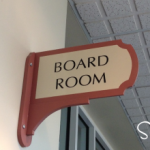 Future Leaders Need Organizational Mindfulness
Future Leaders Need Organizational Mindfulness
![Working With Millennials [infographic] – Friday Distraction](https://i.gr-assets.com/images/S/compressed.photo.goodreads.com/hostedimages/1446072569i/16742944.png) Working With Millennials [infographic] – Friday Distraction
Working With Millennials [infographic] – Friday DistractionThe post INTERVIEW: Dr. Ken Blanchard on Leadership and Management appeared first on hr bartender.






June 7, 2015
All About Employee Personality Tests – Ask #HR Bartender
Many organizations use assessments in hiring and career development. If used properly, they can bring tremendous value. There are legal considerations regarding the use of assessments. Today’s post is not going to focus on the legal aspects of assessments.
Rather, I received a reader question about “sharing with an employee the results of a personality test.” It’s a logical question. If an employee takes an assessment, at some point they will want to know the results.
To help us understand more about assessment conversations, I asked Lilly Lin, director of talent measurement consulting at PAN – Performance Assessment Network. PAN is the world’s leading provider of talent measurement solutions. Their assessment catalog includes solutions to hire, develop and retain talent.
Lilly, I’m accustomed to using the word assessment (versus test). To make sure we’re talking about the same thing, is there a difference between a personality “test” and a personality “assessment”?
 [Lilly] These words are generally used interchangeably depending on the person referring to the ‘test’ or ‘assessment.’ Some employers prefer the word ‘assessment’ so as to soften the experience for the candidate, as many candidates might have flashbacks to ‘tests’ that they took back in grade school which may result in test anxiety when completing the assessment. However, some test publishers may use the word ‘assessment’ to suggest that what they are offering is more robust or in-depth than a ‘test.’
[Lilly] These words are generally used interchangeably depending on the person referring to the ‘test’ or ‘assessment.’ Some employers prefer the word ‘assessment’ so as to soften the experience for the candidate, as many candidates might have flashbacks to ‘tests’ that they took back in grade school which may result in test anxiety when completing the assessment. However, some test publishers may use the word ‘assessment’ to suggest that what they are offering is more robust or in-depth than a ‘test.’
Briefly define what personality assessments are and why they’re valuable in the workplace.
[Lilly] Personality assessments are instruments used to identify underlying traits of an individual as they pertain to work. They can take on various forms:
Likert-type items (e.g., “I have a hard time making decisions” – answered on a scale of 1=Strongly Disagree to 5=Strongly Agree)
Forced-choice items (e.g., Pick one: “I like to be the life of the party” OR “I tend to shy away from crowds”).
These assessments can help employers determine whether an applicant has the right makeup or personality required for the job. For example, if hiring for an accountant, and employer might be more apt to consider a candidate who scores high on detail orientation and introversion whereas an employer seeking out sales candidates might be looking for the opposite.
One note of precaution: employers interested in using these types of assessments for hiring should ensure that correct evaluative measures have been taken to link this assessment to job performance. Loose selection of particular personality characteristics as potential indicators of job performance could lead to legal ramifications for the employer. Employers should consult an I/O psychologist to help them appropriately validate the use of the personality assessment for the job for which they intend to use it.
I know we’re not talking about the legal side of assessments but, you mentioned the validation. Why is validation important when selecting assessments?
[Lilly] Validation is critical to ensure that the assessment being used is job-relevant and legally defensible. This also helps to create buy-in for use of the assessment as many hiring managers need to see how the assessment impacts bottom line outcomes before accepting the process.
Back to the assessment conversation. When a person takes an assessment, who typically receives the results of that assessment (i.e., the employee, the manager, HR, etc.)?
[Lilly] Best practice suggests that the recruiter or HR partner assisting with the selection process should receive the results and advance the candidate onto the next phase of the selection process (usually an interview) if he/she passes the assessment. Some companies allow their hiring managers to view the results of the personality assessment before conducting the interview. This practice, however, is risky as it could skew the manager’s perception of the candidate and inadvertently impact the interview process.
Candidates should only receive their results after they’ve been hired, and only if the results are going to be debriefed with the employee by someone who has been trained in how to interpret the results. Some companies (e.g., Hogan) have very strict processes associated with certifying assessment interpreters. Other companies may deliver a group training session to help results interpreters understand how the reports are structured and provide FAQs or skill practices.
So if a candidate becomes an employee, then it would be appropriate to share the assessment results. But if the candidate doesn’t get hired, are they ever privy to their assessment results?
[Lilly] No, it is not recommended to share test results with the candidate, as that could result in ‘practice effects’, where a candidate could recall his/her responses after taking the test a couple of times and alter future responses in hopes of being able to pass the test in the future, or lead the candidate to question the selection process.
Last question, what should an employee expect when they meet with someone about their assessment results?
[Lilly] A good thorough results review should last anywhere from 30 minutes to an hour. During that discussion, in addition to walking the employee through the different scales, they should also be given a chance to react and share other bits of information that either confirm or conflict with the results.
Additionally, review of these results should be coupled with a broader discussion about how the employee can use this information to develop him/herself. Best case scenario is that the employee will be able to pair this information with a behavioral assessment which can shed light on how his/her personality impacts the behaviors that he/she exhibits in a work context.
Everything you need to know about employee personality tests
Click To Tweet
My thanks to Lilly and the folks at PAN for sharing their expertise. Assessments can bring a tremendous amount of value if they are selected and used appropriately. If you want to learn more about behavioral assessments, check out the PAN blog or follow them on Twitter.
PAN logo and images use with permission. Other post image courtesy of Sharlyn Lauby
Related posts from HR Bartender:
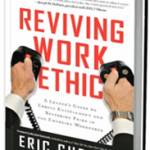 What Does Work Ethic Mean? I Know It When I See It
What Does Work Ethic Mean? I Know It When I See It
 You Can’t Have Self-Managed Teams Without Self-Managed People
You Can’t Have Self-Managed Teams Without Self-Managed People
 Employees Demand More Career Agility
Employees Demand More Career AgilityThe post All About Employee Personality Tests – Ask #HR Bartender appeared first on hr bartender.






Sharlyn J. Lauby's Blog
- Sharlyn J. Lauby's profile
- 10 followers





